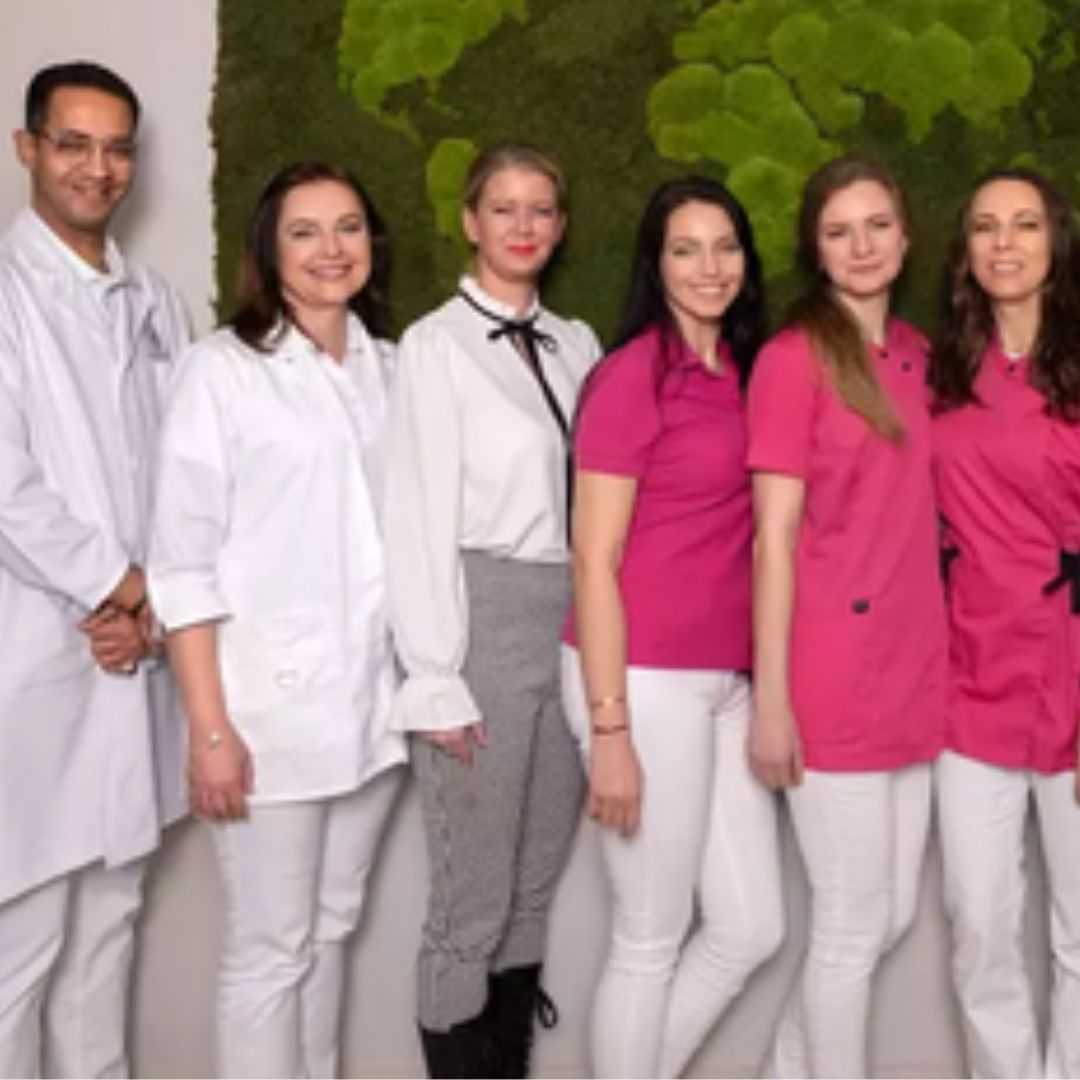
Regain Your Confidence: Comprehensive Guide to Gynecomastia Surgery Abroad
Feeling self-conscious about your chest can significantly impact your confidence and quality of life. For many men, the condition of gynecomastia – enlarged male breasts – creates both physical discomfort and emotional distress. It’s a surprisingly common condition, affecting men of all ages, and it can be a source of constant worry, especially when choosing clothing or participating in activities like swimming.
If you're searching for "how to get rid of man boobs" or "male breast reduction surgery options," you're not alone. The good news is that effective, permanent solutions exist. Gynecomastia surgery offers a transformative path to a flatter, more masculine chest contour, helping countless men reclaim their self-esteem. As you explore your options, you might also be looking into "gynecomastia surgery cost abroad" or "best countries for gynecomastia treatment," and for good reason. Medical tourism provides an excellent opportunity to access high-quality procedures at significantly more affordable prices.
This comprehensive guide will walk you through everything you need to know about gynecomastia surgery. We'll cover the underlying causes and symptoms, delve into the procedure types, discuss recovery, and provide crucial insights into considering treatment abroad, including cost comparisons and tips for ensuring a safe and successful journey. Your journey to renewed confidence starts here.
What Are the Symptoms of Gynecomastia?
Recognizing the signs of gynecomastia is the first step toward seeking treatment. While it might seem obvious, many men are unsure if their enlarged chest is due to actual glandular tissue (gynecomastia) or simply excess fat (pseudogynecomastia). Key symptoms to look for include:
- Enlarged breast glands: A noticeable increase in the size of one or both breasts, often feeling firm or rubbery, particularly beneath the nipple. This isn't just fat; it's actual breast tissue.
- Breast tenderness or pain: Some men experience sensitivity, soreness, or even pain in the breast area, especially when touched.
- Nipple sensitivity: The nipples might become more sensitive or protrude more prominently.
- Uneven breast size: Gynecomastia can affect one breast more than the other, leading to asymmetry.
- Emotional distress: Beyond the physical, symptoms often include significant self-consciousness, embarrassment, and avoidance of activities that expose the chest. This emotional burden is a critical symptom that drives many to seek help.
If you're asking "how to tell if I have gynecomastia," a physical examination by a medical professional is essential to differentiate between true glandular enlargement and fat accumulation, as treatment approaches differ.
What Causes Gynecomastia and Who is at Risk?
Understanding "why do men get gynecomastia" is crucial. The condition typically arises from a hormonal imbalance where there's too much estrogen (a female hormone) relative to testosterone (a male hormone) in the body. While hormones are the main culprit, several factors can contribute:
- Natural hormonal changes:
- Infancy: Up to 90% of male infants are born with gynecomastia due to maternal estrogen, which usually resolves within weeks.
- Puberty: About 50-70% of adolescent boys experience temporary gynecomastia during puberty, often resolving within six months to two years.
- Aging: As men age, testosterone production naturally declines, and body fat tends to increase, both contributing to a higher estrogen-to-testosterone ratio.
- Medications: Various drugs can cause gynecomastia, including some antidepressants, antibiotics, heart medications (like ACE inhibitors, calcium channel blockers), anti-androgens for prostate cancer, ulcer medications, and anxiety medications.
- Illicit drugs and alcohol: Steroids, marijuana, heroin, and excessive alcohol consumption are known risk factors.
- Health conditions:
- Liver disease: Affects hormone metabolism.
- Kidney failure: Can disrupt hormone balance.
- Hypogonadism: Conditions that lead to low testosterone.
- Hyperthyroidism: Overactive thyroid can alter hormone levels.
- Tumors: Rare cases involve tumors of the testes, adrenal glands, or pituitary gland producing hormones that cause gynecomastia.
- Herbal products: Some herbal supplements, like tea tree oil or lavender oil, have phytoestrogens that can affect hormone balance.
It's important to consult a doctor to identify the underlying cause, as treating the root issue might sometimes alleviate the condition without surgery.
What Types of Gynecomastia Procedures Are Available?
The type of gynecomastia surgery, or "gynecomastia treatment options," depends on the primary cause of the breast enlargement:
- Liposuction: If the primary issue is excess fatty tissue in the chest, liposuction alone may be sufficient. Small incisions are made, and a thin cannula is inserted to suction out the fat. This is ideal for cases of pseudogynecomastia or when fatty tissue predominates.
- Gland Excision (Surgical Excision): For true gynecomastia, where firm glandular tissue is present, surgical excision is necessary. This involves removing the glandular tissue, sometimes excess skin, through incisions, typically around the edge of the areola (periareolar incision). This method is highly effective for dense glandular tissue and can address nipple repositioning if needed.
- Combination of Liposuction and Gland Excision: Most commonly, a combination of both techniques is used. Liposuction removes the fatty component, while direct excision targets the firm glandular tissue, providing the most comprehensive and aesthetically pleasing results. This approach ensures a smoother, more natural-looking chest contour.
Your surgeon will assess your condition to determine the most appropriate "gynecomastia surgery methods" for your specific needs, aiming for a natural, masculine chest profile.
Am I Eligible for Gynecomastia Surgery? Who is a Good Candidate?
Deciding "who can get gynecomastia surgery" involves several factors to ensure safety and optimal outcomes. You might be a good candidate if you meet these general criteria:
- Stable Weight: You should be at or near your ideal body weight. Significant weight fluctuations after surgery can affect the results.
- Good General Health: You should be free from life-threatening illnesses or medical conditions that could impair healing or increase surgical risks.
- Non-Smoker: Smoking significantly impairs healing and increases complication risks. Candidates are usually advised to stop smoking several weeks before surgery.
- No Underlying Medical Causes: Your doctor should have ruled out or treated other medical conditions (like tumors, liver disease, or medication side effects) that might be causing the gynecomastia.
- Realistic Expectations: You understand what surgery can achieve and have realistic goals for your appearance.
- Emotional Maturity: For younger patients, it's important that the condition has persisted despite waiting and that they are emotionally mature enough to undergo surgery.
- Persistent Gynecomastia: The condition has not resolved through lifestyle changes, hormone therapy (if applicable), or simply waiting (especially for pubertal gynecomastia).
A thorough consultation with a qualified plastic surgeon is essential to determine if you meet the "gynecomastia surgery requirements" and are suitable for the procedure.
What is the Typical Recovery Time After Male Breast Reduction?
Understanding "gynecomastia surgery recovery" is key to planning your procedure, especially if traveling abroad. Here's a general timeline:
- Immediately After Surgery (Day 1-7):
- You will likely experience some soreness, swelling, and bruising.
- A compression garment will be applied to help reduce swelling and support the healing contours. This is crucial for optimal results.
- Pain medication will be prescribed to manage discomfort.
- Drains may be temporarily placed to collect excess fluid.
- Most patients can return to light, non-strenuous activities within a few days.
- First Few Weeks (Weeks 1-4):
- Continue wearing your compression garment diligently, as advised by your surgeon (typically 2-4 weeks, sometimes longer).
- Avoid heavy lifting, intense exercise, and strenuous arm movements.
- Swelling and bruising will gradually decrease.
- Many patients can return to work or school within 1-2 weeks, depending on the nature of their job.
- Months 1-3:
- You can gradually resume more physical activities, including light exercise.
- Most residual swelling should have resolved, and the final contour of your chest will become more apparent.
- Scarring will begin to mature and fade.
- Full Recovery (3-6 Months):
- The final results of your "how long to recover from gynecomastia" journey will be fully visible.
- Scars will continue to fade and flatten over time.
Your surgeon will provide specific post-operative care instructions tailored to your individual procedure.
What Are the Risks and Side Effects of Gynecomastia Surgery?
While gynecomastia surgery is generally safe and highly effective, it's important to be aware of potential "gynecomastia surgery dangers" and side effects. Common risks include:
- Swelling and Bruising: These are very common post-surgery and typically resolve within a few weeks to months.
- Pain and Discomfort: Managed with prescribed medication, this usually subsides within a few days.
- Temporary Numbness: It's common for the chest and nipple area to feel numb temporarily. Sensation usually returns over time, but in some rare cases, it can be permanent.
- Infection: A risk with any surgical procedure, typically managed with antibiotics.
- Bleeding/Hematoma: Accumulation of blood under the skin, which may require additional drainage.
- Seroma: Fluid accumulation under the skin, which may also require drainage.
- Asymmetry: While surgeons strive for symmetry, slight differences between the two sides can occur.
- Unfavorable Scarring: Scars are permanent but usually placed in discreet locations (e.g., around the areola) and fade over time. Hypertrophic or keloid scars are rare but possible.
- Contour Irregularities: Unevenness or skin depressions may occur, especially if liposuction is performed unevenly.
- Nipple Sensitivity Changes: The nipples might become more or less sensitive after surgery.
- Anesthesia Risks: Though rare, these include adverse reactions to anesthesia, blood clots, and heart or lung problems.
Choosing an experienced, board-certified surgeon significantly minimizes these "gynecomastia complications."
How Does Gynecomastia Surgery Cost Compare Worldwide?
The "gynecomastia surgery cost" is a major factor for many, and it varies dramatically based on location, surgeon's expertise, complexity of the case, and included services. Here's a general comparison:
| Region/Country | Estimated Cost Range (USD) | Key Factors Influencing Cost |
|---|---|---|
| USA, Canada, Western Europe, Australia | $4,000 - $8,500+ | High living costs, extensive insurance regulations, higher surgeon fees, advanced clinic infrastructure. Often does not include travel/accommodation. |
| Turkey, Mexico, Thailand, India, South Korea | $2,000 - $4,500 | Lower operational costs, competitive market, often part of comprehensive packages (including accommodation, transfers), highly experienced surgeons. |
These figures are estimates and can fluctuate. The significant difference in "cheap gynecomastia surgery abroad" is often due to lower overhead costs for clinics and surgeons in these regions, rather than a compromise on quality. Many clinics in popular medical tourism destinations boast state-of-the-art facilities and internationally trained specialists.
Why Consider Gynecomastia Procedure Abroad for Better Value?
The appeal of medical tourism for procedures like male breast reduction is growing rapidly. Here are compelling reasons to consider "gynecomastia treatment overseas":
- Significant Cost Savings: As seen in the cost comparison, the price difference can be substantial, making life-changing surgery accessible to more individuals.
- Access to High-Quality Care: Many medical tourism hubs feature modern, accredited hospitals and clinics staffed by internationally trained, highly skilled surgeons.
- Reduced Wait Times: In some countries, lengthy waiting lists for elective procedures can delay treatment. Abroad, you can often schedule your surgery much sooner.
- Privacy and Discretion: Some prefer the anonymity of undergoing a cosmetic procedure away from their home country.
- Opportunity for a "Medication": Combining your recovery with a relaxing stay in an attractive tourist destination can enhance the overall experience and aid in mental well-being during recovery.
- All-Inclusive Packages: Many international clinics and facilitators offer comprehensive packages that include surgery, accommodation, airport transfers, and sometimes even a dedicated coordinator.
For many, the combination of affordability, quality, and convenience makes medical tourism an irresistible option for reclaiming their physique.
Which Countries Offer the Best Value for Gynecomastia Surgery?
When searching for "best countries for gynecomastia surgery," a few destinations consistently stand out for their blend of quality, affordability, and medical tourism infrastructure:
- Turkey: Particularly Istanbul, is a powerhouse for plastic surgery. It offers state-of-the-art clinics, highly experienced surgeons (many fluent in English), and packages that often include accommodation and transfers, making it very attractive.
- Mexico: Especially cities near the U.S. border or popular tourist destinations like Cancun, offer convenient and affordable options for North American patients. Surgeons are often U.S.-trained and facilities are world-class.
- Thailand: Bangkok and Phuket are renowned for their excellent medical facilities, highly trained specialists, and a strong focus on patient care and hospitality. It's a popular choice for those seeking a relaxing recovery environment.
- India: Offers some of the most competitive prices globally without compromising on quality. Many Indian surgeons have international training, and hospitals are often accredited to international standards.
- South Korea: Known for its advanced aesthetic procedures, South Korea provides cutting-edge techniques and highly specialized surgeons, particularly in Seoul, though prices might be slightly higher than other Asian destinations.
These countries have established reputations for delivering excellent results in male breast reduction, making them prime choices for international patients.
What to Expect When Traveling Abroad for Male Breast Reduction?
Traveling for a medical procedure, even one as routine as male breast reduction, requires careful planning. Here's a general outline of "what to expect when traveling for this procedure":
- Initial Consultation & Planning: This often happens remotely via video call. You'll discuss your goals, medical history, and send photos. The clinic or facilitator will provide a treatment plan and quote.
- Booking Travel & Accommodation: Once your surgery date is set, you'll book flights and accommodation. Many clinics offer packages that include this. Plan to arrive a few days before surgery for pre-op appointments.
- Pre-Operative Appointments: Upon arrival, you'll have in-person consultations with your surgeon, undergo necessary medical tests (blood work, ECG), and finalize paperwork.
- The Procedure: The surgery itself typically takes 1-3 hours, followed by a recovery period in the clinic/hospital before being discharged, usually the same day or the next.
- Post-Operative Recovery Abroad: You'll need to stay in the country for at least 7-10 days (sometimes up to 2 weeks) for follow-up appointments, drain removal (if applicable), and initial healing. This ensures your surgeon can monitor your progress and address any immediate concerns.
- Return Home: Once cleared by your surgeon, you can travel back home. You'll receive detailed post-op instructions for continued recovery.
- Follow-Up at Home: While your primary care will be overseas, you should inform your local doctor about the surgery for ongoing care.
Communication is key. Ensure you have clear instructions and understand the process, especially regarding language barriers and local support.
How to Ensure Safety and Quality for Gynecomastia Treatment Abroad?
Prioritizing safety and quality when considering "gynecomastia treatment abroad" is paramount. Here’s how to do your due diligence:
- Verify Clinic Accreditation: Look for international accreditations such as Joint Commission International (JCI). This signifies that the facility meets rigorous global healthcare standards.
- Research Surgeon Credentials: Ensure your surgeon is board-certified in plastic surgery, has extensive experience with gynecomastia procedures, and is part of recognized professional organizations (e.g., ISAPS, ASPS). Don't hesitate to ask for their CV and before/after photos of their work.
- Read Patient Reviews and Testimonials: Look for independent reviews on platforms like Google, Trustpilot, or medical tourism forums. Be wary of clinics with only overwhelmingly positive or suspiciously few reviews.
- Clear Communication: Ensure the clinic provides clear, comprehensive information in English (or your preferred language) and responds promptly to all your questions. A good medical tourism facilitator can bridge any communication gaps.
- Transparent Pricing: Get a detailed breakdown of all costs, including the surgery, anesthesia, facility fees, post-operative garments, medications, and any included travel/accommodation. Avoid hidden fees.
- Understand the Package: Know exactly what’s included in your medical tourism package – pre-op tests, consultations, hospital stay, post-op checks, transfers, and accommodation.
- Contingency Planning: Discuss potential complications and the clinic's plan for addressing them, including follow-up care if issues arise after you return home.
- Trust Your Gut: If something feels off, explore other options.
Working with a reputable medical tourism facilitator like PlacidWay can significantly simplify this process and help ensure a safe, high-quality experience.
What Are Patient Success Stories from Gynecomastia Treatment Abroad?
The true measure of a successful procedure lies in the patient's experience and outcomes. While specific individual stories vary, the general sentiment among those who have undergone "male breast reduction abroad" is overwhelmingly positive:
- Renewed Self-Confidence: "I finally feel comfortable taking off my shirt at the beach. It's been years since I felt this confident." – Mark, from the UK, treated in Turkey.
- Life-Changing Transformation: "Gynecomastia had a huge psychological impact. Getting it done in Mexico was the best decision. The results are amazing, and I saved so much money." – David, from the US.
- Exceptional Care and Value: "I was apprehensive about going overseas, but the clinic in Thailand was incredibly professional. The surgeon was fantastic, and the entire staff made me feel at ease. I couldn't be happier with my new chest." – Ethan, from Australia.
- Seamless Experience: "PlacidWay helped me find a top-rated clinic in India. Everything from airport pickup to my post-op checks was perfectly organized. It truly changed my perception of medical travel." – Ben, from Canada.
- Improved Quality of Life: "No more hiding my chest. My posture has improved, and I feel so much lighter. It's not just about aesthetics; it's about reclaiming a part of my life I thought was lost." – Alex, from Ireland.
These stories highlight a common thread: the combination of expert medical care, significant cost savings, and the opportunity to recover in a supportive environment leads to profoundly positive and transformative outcomes for many men worldwide.
Take the Next Step with PlacidWay
Ready to explore treatment options abroad? Discover top clinics, compare prices, and get a free quote tailored to your needs with PlacidWay.
Cosmetic Surgery Abroad, Plastic Surgery Abroad










Share this listing